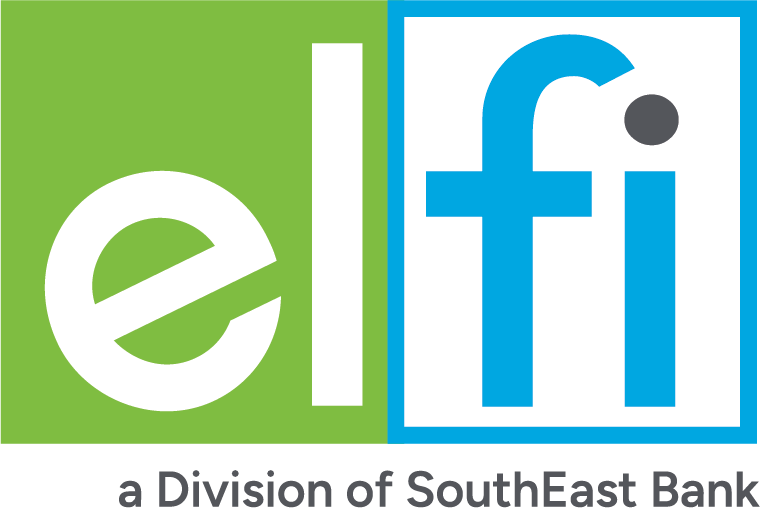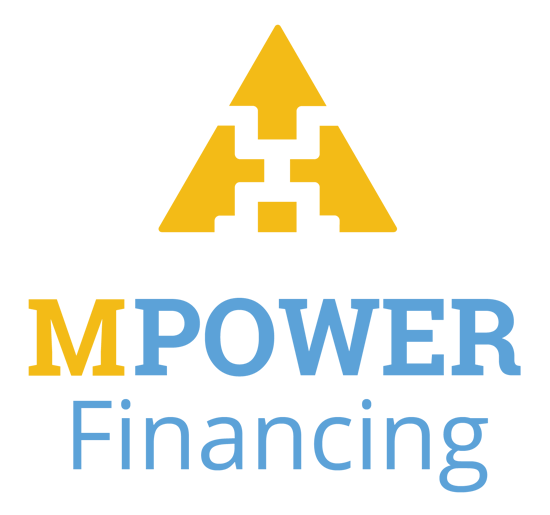What Are the Odds I’ll Get Student Loan Forgiveness?
The odds you’ll get student loan forgiveness depend on your eligibility for existing programs.

Many, or all, of the products featured on this page are from our advertising partners who compensate us when you take certain actions on our website or click to take an action on their website. However, this does not influence our evaluations. Our opinions are our own. Here is a list of our partners and here's how we make money.
The odds you'll get student loan forgiveness through existing forgiveness programs have been generally poor, since the vast majority of borrowers fail to meet one or more of the federal government's requirements for eligibility.
Advertisement



Student loans from our partners

on SoFi® website
SoFi® 

Fixed APR
4.24-9.99%
Min. credit score
650
on Earnest website
Earnest 
Fixed APR
4.79-9.99%
Min. credit score
665

on Credible’s website
ELFI 

Best for faster repayment options
Fixed APR
4.88-8.44%
Min. credit score
680
President Biden's plan to cancel up to $20,000 in student debt for qualifying borrowers was legally blocked by the Supreme Court on June 30, 2023.
But this one-time debt cancellation was not the only hope for struggling borrowers. Changes to existing forgiveness programs, such as Public Service Loan Forgiveness, income-driven repayment forgiveness or borrower defense to repayment. The Education Department has made changes giving borrowers more time and flexibility to meet requirements.
Since the start of Biden’s term, the Department of Education estimates that more than $38 billion in loans have been forgiven through existing programs, affecting more than 1.75 million borrowers.
One thing to keep in mind: Only the owner of your debt (the federal government or your private lender) can forgive or cancel your debt. That means no other organization can forgive your debt — no matter how legit they might seem.
Among the current federal student loan forgiveness programs, here’s what the approval stats look like (data for some programs are limited):
Public Service Loan Forgiveness stats
Federal student loan borrowers working in public service can get their loans forgiven tax-free after 10 years' worth of payments made while working full time for qualifying employers. Borrowers must have direct loans and be enrolled in an income-driven repayment plan to qualify. It’s a notoriously difficult process with lots of red tape and a high rejection rate.
Under Temporary Expanded Public Service Loan Forgiveness, or TEPSLF, borrowers who made payments on a graduated, extended, consolidation standard or consolidation graduated repayment plan can apply for loan forgiveness, even though payments made on those plans don’t usually qualify. There is only one application for PSLF and TEPSLF.
A limited waiver for PSLF was also available for borrowers whose payments previously didn't qualify for PSLF, though the program is now closed. Under the waiver, more loan types and repayment plans are temporarily eligible for PSLF. Borrowers had to consolidate their loans into a direct loan and submit a PSLF form before Oct. 31, 2022. Millions of borrowers are also expected to benefit from one-time fixes to income-driven repayment that would retroactively count additional months toward PSLF.
Here’s how many borrowers have seen their debts discharged through PSLF:
• 11% of all PSLF and TEPSLF applications have been approved, according to June 2023 data from the Department of Education (673,077 approved for discharge among 6,147,812 total applications).
• Total discharges processed included: 19,218 for PSLF and 6,520 for Temporary Expanded PSLF.
• The PSLF waiver resulted in 647,339 discharges processed and about $44.63 billion in debt discharged.
• Total debt discharged: Roughly $46.77 billion as of June 2023, according to the Education Department.
Why are so many PSLF applications rejected?
The most common reasons for rejected PSLF applications include:
- The borrower’s eligible loans had not been in repayment for at least 120 months.
- The borrower had been in repayment long enough but did not have enough time at an eligible employer.
- The borrower had been in repayment long enough at an eligible employer, but fewer than 120 payments met standards (qualified payment plan, on time and for the full amount).
The figures that include the majority of those rejected include borrowers who have been in repayment for at least 120 months due to having loans from the Federal Family Education Loan Program, according to the department. When these borrowers consolidated FFELP loans into direct loans, they "were made to start over on a brand-new clock," meaning they didn't get any credit for previous loan payments made during qualifying employment.
Income-driven repayment forgiveness stats
Income-driven repayment plans set borrowers' payments at a portion of their income and extend their repayment period to 20 or 25 years. At the end of repayment, the remainder of their balance is forgiven.
As of June 1, 2021, only 157 of potentially millions of borrowers have received debt cancellation through income-driven repayment forgiveness, according to a March 2022 report by the Government Accountability Office.
» MORE: How many Americans have student loan debt?
The first income-driven repayment plan — income-contingent repayment — was made available to borrowers as of 1995 and extended repayment to 25 years. That means the first cohort of borrowers enrolled in this plan should have first received cancellation in 2020.
Forgiveness rates are low due to a few factors including borrowers not having the right type of loans or borrowers not consolidating into the direct loan program. In addition, the education department says borrowers were often steered into forbearance programs instead of income-driven repayment where they could have been making progress toward forgiveness.
However, it’s important to note that most borrowers were ineligible to enroll in most income-driven plans until Revised Pay As-You-Earn (REPAYE) became available to all borrowers regardless of income in 2015. The first cohort of REPAYE borrowers was slated to start seeing their debt forgiven in 2035.
In summer 2023, the Saving on a Valuable Education or SAVE plan replaced REPAYE. It is a more generous plan that will cut existing IDR monthly payments by half for undergraduate borrowers, and shorten the forgiveness clock to 10 years for those with small amounts of student debt by July 2024.
In summer 2023, the Saving on a Valuable Education or SAVE plan replaced REPAYE. It is a more generous plan that will cut existing IDR monthly payments by half for undergraduate borrowers, and shorten the forgiveness clock to 10 years for those with small amounts of student debt by July 2024.
As part of the American Rescue Plan Act signed by Biden in March 2021, all student loan debt forgiven from December 2020 through Dec. 31, 2025, will be considered tax-free. Usually any amount of debt forgiven through income-driven repayment would be taxed as income.
In April 2022, the Education Department announced a new one-time review to address shortcomings in the income-driven repayment forgiveness program.
Since summer 2023, the one-time review has resulted in $44 billion in debt relief for over 900,000 borrowers. The Department estimates that more than 3.6 million borrowers will move at least three years closer to income-driven repayment forgiveness.
Student loan forgiveness for teachers stats
Teachers can get tax-free loan forgiveness after five consecutive years of work employed full time in low-income public elementary or secondary schools — up to $17,500 in Direct loans or Federal Family Education Loans (FFEL) borrowed after Oct. 1, 1998.
Since fiscal year 2009, a total of 457,500 borrowers with federal loans have had their balances forgiven under the Teacher Loan Forgiveness Program, according to federal data updated February 2023. The total debt forgiven: about $3.87 billion.
Borrower defense to repayment and closed school discharge stats
Borrower defense to repayment: Student loan borrowers who were defrauded by their schools can receive tax-free debt cancellation. Borrowers have to submit a claim for federal loans, but not private loans or costs paid out of pocket. Their schools must have intentionally misled them about their education program or violated certain state laws related to the loan or education services.
Closed school discharge: To be eligible for tax-free closed school loan discharge, your school must have closed while you were enrolled and you haven’t completed your program, or the school must have closed within 120 days of you withdrawing without a degree. It’s automatic, but borrowers who think they were overlooked should speak to their servicers.
As of September 2023, the Education Department has discharged $14.8 billion for 1.1 million borrowers through borrower defense and closed school discharge claims, according to federal data.
Total and permanent disability discharge stats
Total and permanent disability discharge will cancel loans tax-free for borrowers unable to work due to a physical or mental impairment. You’ll have to prove you’re unable to work by providing annual earnings documentation for three consecutive years after discharge.
As of October 2023, a total of $11.7 billion in debt has been discharged for approximately 513,000 borrowers with a total and permanent disability through a regulation that went into effect August 2021. This regulation discharges debt automatically for borrowers identified through an existing data match with the Social Security Administration.
Article sources
NerdWallet writers are subject matter authorities who use primary,
trustworthy sources to inform their work, including peer-reviewed
studies, government websites, academic research and interviews with
industry experts. All content is fact-checked for accuracy, timeliness
and relevance. You can learn more about NerdWallet's high
standards for journalism by reading our
editorial guidelines.
AD
Refinance Your Student Loans with Earnest: smarter rates, total flexibility, no fees.
Check rate
on Earnest's website

AD

Refinance Your Student Loans with Earnest: smarter rates, total flexibility, no fees.
- Fixed APRs starting at 4.79%, Variable Rates starting at 5.88%;
- Customize your term down to the month (5–20 years);
- Skip one payment every 12 months.
Check rate
on Earnest's website
AD
Refinance Student Loans with SoFi:
low rates, flexible terms, no fees.
Check rate
on SoFi®'s website

AD

Refinance Student Loans with SoFi:
low rates, flexible terms, no fees.
- Rates: 4.74-9.99% (fixed) / 5.99-9.99% (variable) APR;
- Terms between 5–20 years, plus features like interest-only SmartStart for residents;
- Zero application/origination/prepayment fees — ever.

Check rate
on SoFi®'s website







